#bi youth
Text
Lin Kuei Sibling Headcanons
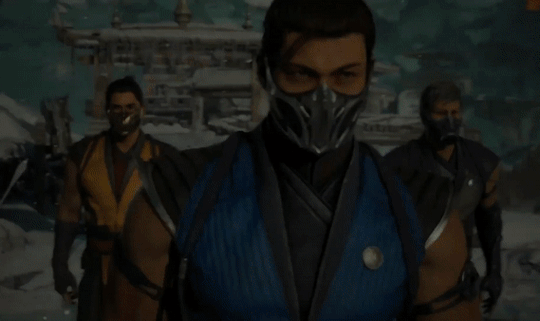
I gotta stop using the same gifs over and over again. Anywho, just random headcanons about them when they were younger. A few of these is what my siblings and I did but listen-. No sad shit this time around, but next time issa wrap no bun (word to CoryXKenshin)
When they were younger Bi-Han realized someone was drinking his shit, so he started spitting in it
He also loudly announces that he did so and that whoever drank his shit was drinking his germs
Kuai Liang responded by saying “well we both share the same DNA”
Revolting. Yuck.
Tomas smiles when he's nervous so people always think he's lying.
“Did you drink my slushy?” “No” “Yes you did. You're smiling” “YOU'RE MAKING ME NERVOUS”
D if you ever see this, I did not drink that fucking slushy years ago and getting mom involved was actually so foul. “Put that on my dead granny”, WHY WOULD I LIE ON GRANDMA? I SHOULD'VE drank it. Should've took a big ass gulp
Moving on-
Like I said in my last post, Bi-Han and Kuai Liang have definitely jumped Tomas before
They call it play fighting, Tomas calls it attempted murder
Bi-Han is the “come here” brother and Tomas is the “you're gonna hit me” brother
Bi-Han is also the “you want a cookie?” and Tomas is the “what'd you do to it?”
Speaking of those two, the real reason Bi-Han doesn't like Tomas is because Tomas would stand in his doorway and when Bi-Han would tell him to get out, Tomas would say “I'm not in your room”
Kuai Liang would put his finger close to Bi-Han but say he's not touching him
That's the real reason he betrayed them. It's true. I asked him.
Idk which one them does it but one of these mfs puts the cereal box in front of them to ignore the brother they're mad at
Tomas is “your dad is pissing me off”, Kuai Liang is “lmao what happened?”
Bi-Han’s room is the chill out spot against his will
Kuai Liang has accidentally set someone on fire 100% and they never let him live it down (my siblings did that on purpose but scooting right along) (no one died😃)
Tomas is the victim of white jokes. He'll say smth and here comes Bi-Han “why are you?? speaking?? to me?? as a white person?? go eat salt??”
Kuai Liang is “hey can I have a bite?” and Bi-Han says “sure” then licks all over whatever he has.
“Tuesday is my day with the TV” “you're adopted. shut up”
Bi-Han has gotten the other two into several fights ‘cause he has a bad temper and his siblings ride for him
This one time my sister yelled at a teacher for yelling at me and that's Bi-Han. Like yeah, he's not the nicest as an adult but as a kid? The only mf that's allowed to yell at his brothers is HIM.
They've all gotten whooped because none of them snitch on each other. This is a ride or die brotherhood (for now) (not me tho. My mom got a heavy ass hand. You're on your own)
“Tell your brother to do those damn dishes” “you want me to say it like that? with the curse word?” “go ahead”
Whoever it is goes to their brother and- “dad said get your big nasty ass up and clean those motherfucking dishes before he whoops your skinny long neck ass”
I cannot pinpoint who exactly would do this and risk the whooping so imma just say they've all been guilty
Bi-Han and Kuai Liang are those annoying ass kids asking you to play bloody knuckles. If you don't get the fuck away from me-
Tomas played with Kuai Liang once and quit immediately
Kuai Liang is the “I only had a cup” when the juice is all gone. Yeah, you had a big ass cup you get from Super America. The Minute Maid is gone because of you
Bi-Han and Kuai Liang, “Say Fuck, I'm not gonna tell dad”. Tomas says “no” and the day he does say it now he's being blackmailed
Kuai Liang would help Bi-Han look for shit he knows he took. Y'all may think Kuai Liang would never do such a thing. He's so sweet. THAT'S HOW HE GOT AWAY WITH IT!
When they accidentally really hurt the other and hear their parents, they have different reactions. Bi-Han is the “tell them. I don't care. Actually, I'll tell them for you” brother. Kuai Liang is the “wait wait wait, calm down. Stop crying. Look, you can hit me back. You want candy?” brother. Tomas is the “that was actually an accident. My bad” brother.
Tomas actually learned all that smoke… magic… uhh… shit so he could defend himself cause he was getting ragdolled in that house
Kuai Liang is actually really nice to Tomas now cause he looks back and thinks “wow, I was kinda an asshole”
For example, Tomas was living his life and here comes these maniacs grabbing him and putting his bare feet in the snow
Idk, I just really think Tomas was fighting for his life in that house
It was all in love but now he jumps when they move a little too fast
Tomas tells his brothers he loves them a lot because he wasn't able to tell his birth family before they were killed. He wants them to always know and whenever their time does come, he wants it to be the last thing they hear from him or the last thing he says before he dies.
Kuai Liang usually says it back or says something else comforting. His way of saying “I love you” can be something as simple as a hand on the shoulder. Sometimes instead of saying “I love you”, he says “I care about you”. Personal preference
Bi-Han used to say “I love you” back but as time passed, he stopped. He's someone who gets kinda uncomfortable when it comes to vulnerable emotions. His way of saying “I love you” is “are you hurt?”. It's usually only used after a form of combat but combat can make you realize that your life is on a time limit. We saw in game and by intro dialogues that he was hurt by Kuai Liang not sticking by him. The idea that he doesn't care for his family AT ALL I think is false. I think he cares but he cares about his own goals more.
That's all I got for fluffy shit rn
I’m actually someone who enjoys angst way more than fluff but thinking about them and angst makes my heart fall into my ass … imma write some later tho
#bi han#bi han sub zero#mk1 bi han#kuai liang#kuai liang scorpion#kuai liang mk1#tomas vrbada#tomas vrbada smoke#tomas vrbada mk1#lin kuei#lin kuei brothers#mk1#mk1 2023#mk1 headcanons#bi han headcanons#kuai liang headcanons#tomas vrbada headcanons#theyre so special to me#making grown buff men bby girls#i lowkey turned them into black youths#it could be worse#they could like pumpkin pie#mortal kombat 1
323 notes
·
View notes
Text

May bi-flag-colored Clark Kent from Harvests of Youth gently carrying a potted succulent bless your dashboard <3
#Superman: The Harvests of Youth#Clark Kent#DC Comics#Superman#the way they really just. put him in bi colors#this comic had such a cute Clark
185 notes
·
View notes
Text
A small faunlet film list ♡
︶︶︶༉‧₊˚.︶︶︶༉‧₊˚.︶︶︶༉‧₊˚.︶︶︶༉‧₊˚.
- Something for Everyone (1970)
- Saltburn (2023)
- The Chocolate War (1988)
- The Gay Deceivers (1969)
- Lilies (1996)
- Dark Harbor (1998)
- Rushmore (1998)
- A single man (2009)
︶︶︶༉‧₊˚.︶︶︶༉‧₊˚.︶︶︶༉‧₊˚.︶︶︶༉‧₊˚.

#faunlet#faunlet community#faunlet aesthetic#aesthetic acc#boy blog#boyblog#boy blogger#faunlette#lgbt#movies#movie#films#film reccs#youth#gay#bi#lgbt films#retro films#70s#80s#90s#60s#og coquette#coquette#reccs#aesthetic account#aesthetic
74 notes
·
View notes
Text
even though it’s silly how many times nick nelson says “i’m bi actually” in heartstopper season 2, the presence of that detail is actually so important because it displays the reality for bisexual people coming out, especially if they’re also in a relationship, because people will just assume you’re either gay or straight but like. i’m bi actually. and it just makes nick feel so much more real as a character and really builds on the preexisting sense of relatability already found in the show. in this essay i will-
#heartstopper#nick nelson#heartstopper season 2#i’m bi actually#charlie spring#heartstopper show#heartstopper netflix#kit connor#joe locke#bisexual#gay#lgbtq#lgbtqia+#queer shows#queer youth#queer fiction#lgbtq youth#bisexual pride
232 notes
·
View notes
Text

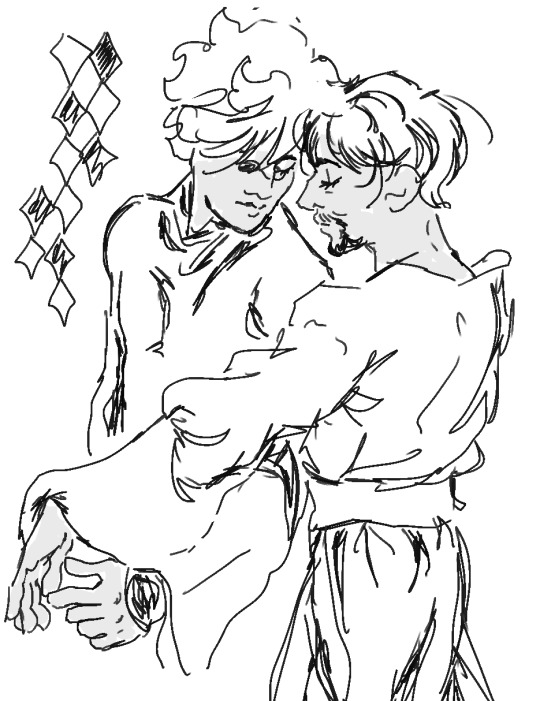
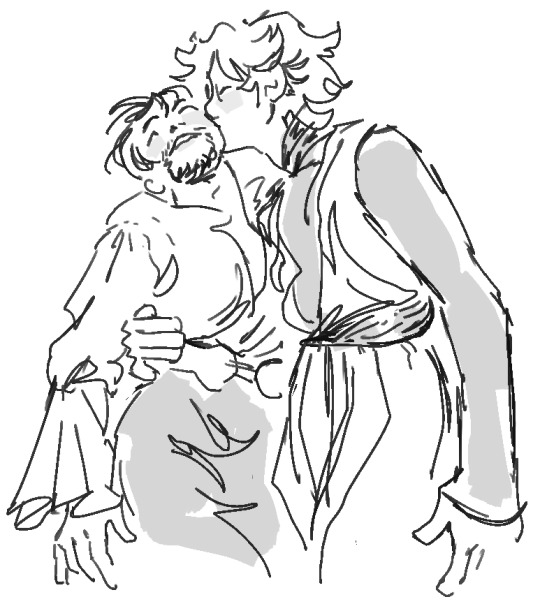


orufrey..and coustah follow-up on yesterday
62 notes
·
View notes
Text

Protect trans kids 🏳️⚧️💕
#bisexual#lgbtq#me#selfie#bi#lgbt pride#lgbtq community#trans youth#trans#trans kids#protect trans kids
477 notes
·
View notes
Text
dear internauts hopefully reading this post
my real name will remain anonymous but you can call me Olivia, I am a worker in the fan project @the-rainbow-neighborhood as a voice actress and an artist and I'm proud to say that this is the first job i have to finally enter this beautiful place called the animation company under the hand of a nice boss.
sadly, most of the people working in this proyect (the boss included) are rather young, some underage even, we all have passion on creating a fan serie based on welcome home, and Welcome home has a lot of LGBTQ content in it.
The KOSA laws will, instead of just censoring or regulating, ban the accounts of every user under the age of 18 from the internet to "protect" kids from dangerous content, and by dangerous content, they include LGBTQ, history of marginalized groups, mental health, sexual edication, birth control and abortion content and resources.
they will also use extremly invasive online surveillance of all internet users and with the invasive parental control they are going to use, children victims of familiar abuse won't be able to reach out for help.
Now, let's get personal, a lot of Staff in the TRN project staff is gay, trans and some of them went trough abusive family enviroments (names won't be revealed) a lot of us have sever mental issues and need help or at least venting. KOSA won't only delay the project, it will harm the staff in a personal level too!
there's nothing I can do due to not being american, but you can help, down there will be links in wich you can help to prevent KOSA from censoring freedom of expression and censoring our identities
please, keep our children safe, and by our children, we mean ALL of them, the queer kids, the mentally ill kids, the neurodivergent kids, the trans kids, the AFAB kids, the children of color. ALL
remember, censorship, wont eliminate the creeps, it will just make them less vissible
#blue-levandar#stop kosa#bad internet bills#protect trans kids#protect trans youth#protect asian lives#protect black women#lgbtq#lgbt#bisexual#bi#gays#gay#sapphic#lesbian#actually autistic#autism adhd solidarity#adhd#abortion#reproductive rights#reproductive health#reproductive justice#latina#neurodivergent#welcome home#welcome home puppet show#julie joyful#sally starlet#frank frankly#poppy partridge
28 notes
·
View notes
Text
Hey, just a reminder that while turning Homophobic reletives into allies is really cool, it's also not your responsibility, nor is it something you can reasonably expect to happen to everyone in your family whose bigoted. An accepting family is nice but you shouldn't expect it, or think of it as a requirement to live your life.
#196#my thougts#queer rights#queer theory#queer#lgbt#queer youth#lgbtq community#lgbt pride#gay#bi#enby#trans#nonbinary#non binary#non bianry#agender#gender#coming out#leftist#leftists#leftism#queer liberation
38 notes
·
View notes
Text


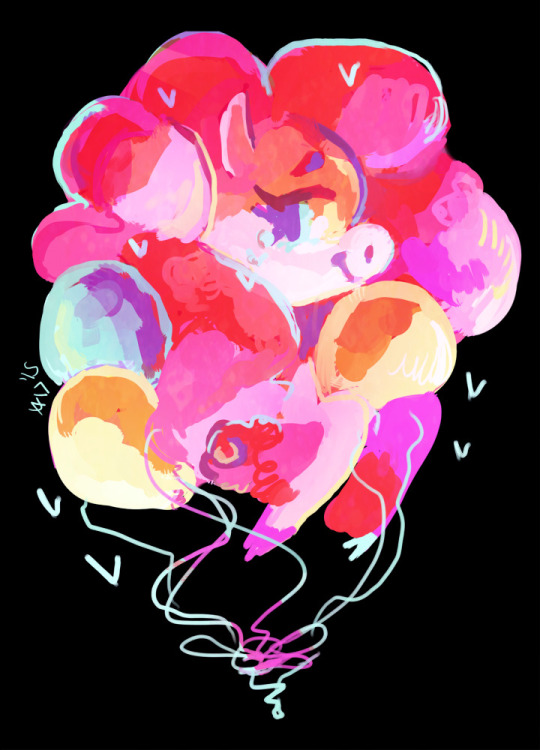

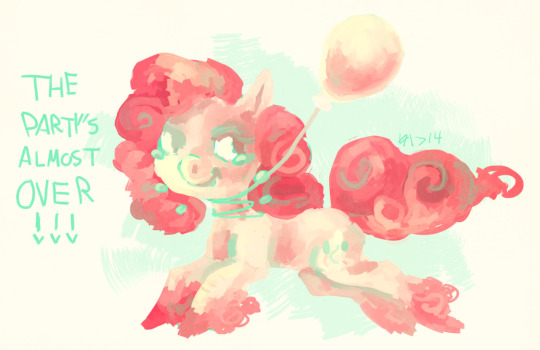
Just wanted to share some old art, Fluttershy isn't the first time I've used ponies to get feelings out. May I show you Super Bipolar Pinkie Pie Art
#.#..#...#....#.....#pinkie pie#mental illness#suicide cw#or at least eluded to#Pinkie is def bi polar in failgirl universe#some of this is over ten years old LKFJASDF;KLJ MY YOUTH...
110 notes
·
View notes
Text

Uuuh... It's still pride month, right?!
Btw here's my artwork for this year, happy pride everyone! Stay safe and take care ✊🏻🏳️🌈✨
#art#digital doodle#digital drawing#digital fanart#drawing#brazilian artist#original character#artwork#oc art#oc#BRart#pride#lgbt pride#bi pride#gay pride#trans rights#protect trans youth#pride month#trans pride#lesbian pride#lesbian#gay#queer pride#queer artist
80 notes
·
View notes
Text

"We are challenging people to face their own external and internal biphobia. We are demanding attention. We are redefining 'anything that moves' on our own terms."
So declares the introduction to Anything That Movies, a bisexual zine that ran from 1991 to 2001. Founded by editor and photographer Karla Rossi, Anything That Moves got its name from the stereotype that bisexual people will sleep with "anything that moves," and it sought to redefine these and other assumptions about bi people in its decade-long run. Rossi didn't respond to Mashable's request for comment.
All 22 issues of Anything That Moves are now archived by a group of young bisexual people and allies. Not only does the archive introduce a new generation to a rare instance of bi-focused writing, but it's also shockingly relevant to issues bi people face today.
Discovering the bisexual zine
Snippets of the introduction have circulated the internet in recent years, and they're referred to as the ATM "manifesto" on its website. The words caught the attention of bi writer Kravitz Marshall, but he had never seen other material from the zine.
In 2020, Marshall found the Anything That Moves website, a relic of the early 2000s with an incomplete archive. He then bought issue #16 from Bolerium Books, a source for out-of-print books and material related to social movements. Marshall scanned each page of the issue and uploaded it online for free; he had planned on doing this for all issues of Anything That Moves, but acquaintances on a bisexual Discord server expressed interest in helping. The discussion grew so much that they created a separate server.
"It was the first time I became aware such a thing existed and I became very excited at the thought of finding and reading more copies," said Jo, a bi femme activist who became involved in the project and now helms the archive email.
The group found issue #2 via Reddit, but believed finding all the issues would be a difficult process — until a member of the now-inactive archive server was able to gather PDFs of every issue through her university library.
"It was thrilling and such a relief," Marshall told Mashable, "because had this not happened, we might've had to do it the hard and expensive way."
"It happened so fast," Jo recalled. "I just remember about seven bisexuals, including Krav and myself, putting our heads together to figure out the best way to get our hands on all these copies and how to share them with the rest of the LGBTQ community."
Now, the work of Marshall, Jo, and a group of bi people and allies is gathered in the archive.
Joy and heartbreak of Anything That Moves
Reading through the archive is, personally, an ambivalent experience. Anything That Moves began before I was even born, and I feel kindred reading this decades-old work; it's like reading discussions I've had with bi friends back to me. The articles, reviews, fiction, and poetry in discusses visibility, (non)monogamy, the inclusion of trans people in bisexuality — to name merely a few topics still pertinent today.
Despite the joy of reading this bi-centric work, however, it's telling how little has changed since 1991.
Jo, who grew up in a conservative area, found the zine refreshing and comforting. "Even when you discover/read/watch anything regarding LGBTQ history, it’s very rare for any specific focus to be given to the bisexual community," they said. "Finding Anything That Moves was a shock to my system."
Marshall was touched by the "unfiltered life" within its pages. "There's urgency, there's knowledge, there's joy, there's righteous rage, there's lust," Marshall said, "and you don't have to go searching between the lines for it — it grabs your shoulders and shakes you until you reach the back cover."
Despite the joy of reading this bi-centric work, however, it's telling how little has changed since 1991.
For Jo, the experience of reading Anything That Moves has been both special and heartbreaking. "A lot of the subject matter is stuff that the bi community has been dealing with forever," they said. "The same stereotypes and heterosexism that bisexuals faced nearly thirty years ago are still very prevalent today."
"It really hits you that virtually nothing has changed about the outside perception of bisexuality and bisexuals," Marshall agreed. "Almost every single issue we grapple with now is a hand-me-down."
He pointed to a piece in the inaugural issue called "This Poem Can Be Put Off No Longer" to display his point. Here are the first few stanzas:
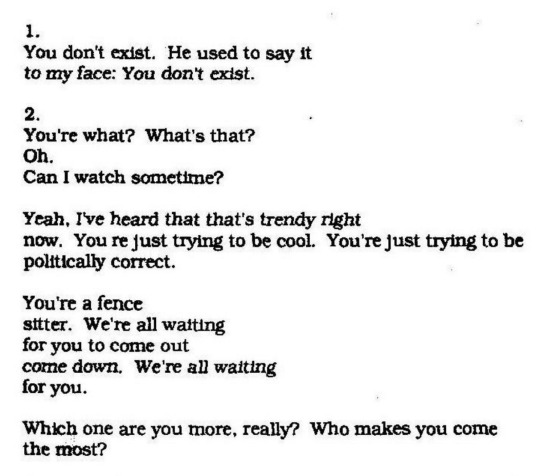
The first several stanzas of "This Poem Can Be Put Off No Longer" by Susan Carlton, featured in the first issue of 'Anything That Moves.' Credit: Anything That Moves / Susan Carlton
The poem continues, but the point is clear from the start: Bisexual people aren't believed for who they are. They're belittled and told to "choose a side," that they're bisexual for attention. It's difficult to think that this poem is over 30 years old.
The poem "truly could've been written yesterday... or 50 years ago," said Marshall. "How long do we have to keep screaming the same things to the world over and over until people stop pretending we're speaking another galaxy's language?"
Stigma against bisexuality still persists today, and impacts people's lives: Bisexual people are more likely to be anxious and depressed; they're also more likely to experience intimate partner violence.
The stagnancy of the world's perception of bisexual people infuriates Marshall, he said, but it's imperative to still talk about these issues. "You can't just stop talking about these issues, so you just say the same things, because the world that needs to listen to you refuses to move on. And I'm not a fan of repeating myself," he said. "You just feel like you're going crazy."
The solace of Anything That Moves, however, is that even though progress has been slow, fellow bisexual people can relate to the shared experience detailed in its pages.
"How long do we have to keep screaming the same things to the world over and over until people stop pretending we're speaking another galaxy's language?"
After Jo came out, for example, they internalized that being bi made them "second-rate." They didn't feel welcome in cisheterosexual circles nor LGBTQ circles, a common feeling for bisexual people who feel like they're straddling both. Searching for issues of Anything That Moves, part of bisexual history, helped Jo connect with other bi people. Being able to meet others facing the same issues, and sharing this historical information and searching for more, has made the biggest impact on them and their identity.
"I don't feel as alone as I once did because bisexuals of today wanted to learn more about their bisexual elders," they said.
Those who have found the archive have also felt that connection. The archive team has received waves of emails, messages, and followers — some wanting to help, others thanking them.
"For the most part, people are just delighted to finally get to read the magazine," Marshall said.
Even this positive feedback echoes the sentiment of the time. Readers wrote to Anything That Moves, and some of those letters are published in subsequent issues. "You can see so clearly how life-changing these publications were to some people," Marshall said, "so thank God it was brought to the world."
"It's something I definitely needed when I was a closeted, bisexual teenager."
The archive has helped current bi readers ground in their bisexuality, Jo said. The archivists even connected with some former Anything That Moves editors, who discovered them through the project. "I'm just happy we got a chance to say thank you for everything they left for us to discover," Jo said.
There's still work to be done for the archive, like transcriptions for easier reading and sharing. Some people involved even planned on making an original virtual bi zine, Marshall said, but due to personal commitments, the idea fizzled out within months.
"I still hope it'll exist one day," Marshall said. "If by some miracle the future grants me that wish, I won't reveal its title, but I find it pleasantly cheeky."
For now, of course, there's nearly two-dozen issues of Anything That Moves. Jo believes the zine is a gift.
"I want to be able to share this gift with anyone else who may need it," they said. "It's something I definitely needed when I was a closeted, bisexual teenager."
#bisexuality#bisexual community#lgbtq community#lgbtq#bi#support bisexuality#lgbtq pride#pride#bi tumblr#bisexuality is valid#bisexual#bi pride#bisexual nation#bisexual pride#bisexual education#bisexual youth#support bisexual people#bisexual men#respect bisexual people#bisexual rights#magazine#bisexual woman#bisexual people
1K notes
·
View notes
Text
The Intersectionality of Queer Identity & Punk Rock
A Zine?
Yes, zine! Zines are like little pockets of subculture just waiting to be discovered. For me, they've been a constant source of fascination since my middle school emo days, when I first read Perks of Being a Wallflower. It was like finding a secret language, a way to express myself outside the mainstream. The Rocky Horror Picture Show and alternative music were my jam back then (and still are!) and discovering that zines could blend both worlds was utterly mind-blowing.
I delved deep into zine archives, soaking up inspiration from creators who came before me. I researched tirelessly, learning the ins and outs of zine-making, and honing my writing skills for the chance to contribute my own voice to this brilliant community. Suddenly, I had this platform where I could talk about everything I loved in one place. It wasn't just about sharing passions; it was about connecting with others who felt the same way, building a community of like-minded souls bound together by ink and paper. It was liberating!
Why did I choose this mode?
As stated before, zines bring together important conversations that people are passionate about. I am pulling from Perks of Being a Wallflower in the sense that I am bridging two concepts that are very close to my heart. As an as a self-described alternative queer man, I believe it is very important to remember where we came from, who came before us. This zine serves as an homage to the queer/alternative voices that came before me; however, this is not just for other queer or alternative individuals. This is for everyone. Regardless of politics, identity, or location, this zine is for you.
Where does Zine culture come from?
Zine culture, with its raw, unfiltered expression and grassroots ethos, finds its roots intertwined with the rise of punk music in the mid-1970s but can be traced all the way back to the early 1930s. Emerging as a response to the commercialization and homogenization of mainstream media, zines served as DIY platforms for individuals to share their thoughts, ideas, and creations in a tangible, accessible format.[x]
The DIY ethos embedded within zine culture finds its parallel in the punk movement. While previous musical genres such as skiffle and rock and roll also embraced DIY elements, it was punk that elevated the concept to a central tenet of its cultural and musical identity.[x] Punk rejected the polished, corporate-driven sound of mainstream music in favor of a raw, do-it-yourself approach that prioritized authenticity and individuality over commercial success.
In the face of state intervention and commercialization within the music industry, participants in alternative music scenes often embraced DIY as a form of resistance. By creating and disseminating their own zines, bands, artists, and activists asserted their independence from mainstream institutions and asserted their right to self-expression. This resistance was not merely a rejection of external forces but also a reclaiming of cultural autonomy and a celebration of DIY values.
Zine culture, therefore, emerges as a direct response to the limitations and shortcomings of mainstream media and culture. It represents a space where creativity knows no bounds, where voices that are often marginalized or silenced can find resonance and solidarity. In its simplicity and accessibility, zine culture embodies the spirit of punk's DIY ethic, offering a platform for self-expression and community-building that continues to thrive and evolve in the digital age.
Why are zines important?
Zines are vital conduits for self-expression, community building, and the preservation of alternative voices. Rooted in a rich history of resistance and creativity, zines offer a platform for individuals to share their thoughts, ideas, and creations outside the constraints of mainstream media. Emerging as a response to the homogenization and commercialization of traditional publishing, zines embody a rebellious spirit that champions authenticity and individuality.
Unlike glossy, corporate publications, zines are often cheaply made and readily accessible, democratizing the process of expression and inviting participation from individuals of all backgrounds. This accessibility not only empowers creators to share their stories but also fosters a sense of connection and camaraderie among like-minded individuals who share common interests and passions.
At its core, zine culture is about more than just printing; it's about building community and amplifying marginalized voices. By creating and sharing zines, creators forge connections with readers, sparking conversations and collaborations that transcend geographical boundaries. Zines serve as historical and cultural artifacts, documenting the experiences and perspectives of diverse communities, ensuring that alternative narratives are preserved and celebrated. In a world where mainstream media often overlooks or silences marginalized voices, zines offer a space for these voices to be heard, valued, and embraced.
The Basics
A subculture refers to a distinct group within a larger society that shares a set of beliefs, values, practices, and interests that deviate from mainstream culture. Subcultures are born out of a variety of social, cultural, and historical factors, often as a response to the perceived limitations or inadequacies of mainstream society. Dissatisfaction with societal norms and values can lead individuals or groups to seek out alternative spaces where they can express themselves authentically and find like-minded peers.
Subcultural groups often draw inspiration from existing cultural forms, such as music, fashion, art, and literature, which they reinterpret and repurpose to reflect their own distinct identities and sensibilities. This process of reclamation allows subcultures to create new meanings and symbols that resonate with their members, contributing to the evolution and diversification of subcultural identities.
Why punk?
In "Visual Vitriol" by David A. Ensminger, the author encapsulates the essence of punk rock as a refuge for those seeking a space to express themselves authentically. He reflects on the allure of punk, suggesting that many are drawn to it for the opportunity it provides to embrace a queer or unconventional identity comfortably. The quote from "INSIDE FRONT #13" captures this sentiment, highlighting punk as a haven for those who feel alienated from mainstream culture, offering a platform for self-expression without judgment.
Ensminger also acknowledges the significant influence of the LGBTQ+ community within punk. He asserts that "Gays shaped both the looks typifying punk and the history of punk music," recognizing the pivotal role of LGBTQ+ individuals in defining punk's aesthetic and its evolution as a cultural movement. This acknowledgment underscores the profound impact of queer individuals on the visual and musical elements that have become synonymous with punk. In essence, Ensminger's summary portrays punk not only as a musical genre but also as a cultural space shaped by and for those who seek to challenge societal norms and celebrate their identities openly.[x]
Punk 101
Punk rock emerged in the mid-1970s as a raw, energetic, and rebellious response to the perceived stagnation and commercialization of mainstream rock music. Its roots can be traced back to earlier musical movements such as garage rock, protopunk, and glam rock, which laid the groundwork for the aggressive, stripped-down sound that would later define punk. Bands like The Velvet Underground, The Stooges, MC5, and New York Dolls contributed to the development of this new musical aesthetic, characterized by its simplicity, urgency, and confrontational lyrics.
The early punk scene in New York City, centered around clubs like CBGB and Max's Kansas City, saw the emergence of pioneering bands like Ramones, Blondie, Talking Heads, and Patti Smith. These artists rejected the polished, virtuosic style of mainstream rock in favor of a do-it-yourself (DIY) ethos and a more direct, unfiltered approach to music. Meanwhile, across the Atlantic, a parallel punk movement was taking shape in the United Kingdom, spearheaded by bands like Sex Pistols, The Clash, The Damned, and Buzzcocks. Fuelled by a sense of disillusionment with the social and political climate of the time, UK punk bands captured the attention of disaffected youth with their raw energy and provocative lyrics.
Ensminger’s analysis that highlights the significant influence of the LGBTQ+ community within punk, recognizing their pivotal role in shaping the genre's aesthetic and cultural evolution. Punk provided a refuge for those seeking to express themselves authentically, including queer and unconventional identities. This acknowledgment underscores punk's broader significance as not just a musical genre but a cultural space where individuals could challenge societal norms and celebrate their identities openly.
Punk rock had a profound impact on music, fashion, and culture at large. Its influence can be seen in subsequent genres like hardcore punk, post-punk, and alternative rock. Punk's DIY ethic and spirit of rebellion continue to inspire artists and activists around the world, reminding us of the power of music to challenge the status quo and amplify marginalized voices.
What about Riot Grrl?
Isaacson's analysis reveals Riot Grrrl's enduring legacy of empowerment and activism, demonstrating how its in-fluence resonated across subsequent generations of punk and Queercore artists. Riot Grrrl's ethos of self-expression and collective action inspired a new wave of feminist and queer activism within punk and beyond, shaping the cultural landscape and providing a voice for marginalized communities.
The problematic past of punk history
The problematic past of punk, as explored in "Cultural Criminology" by Jeff Ferrell and Clinton R. Sanders, sheds light on the complex relationship between subcultures, societal norms, and the criminal justice system. While punk emerged as a form of resistance against societal constraints, it also harbored elements of extremism and prejudice, particularly evident in its association with neo-Nazi skinheads.[“Subculture, Style, and Crime.” Cultural Criminology, 1995]
The evolution of punk, like many other musical genres, began as a grassroots expression of resistance by marginalized groups within the political-economic system. Ferrell and Sanders emphasize that punk's origins lie in the struggles of young people with limited resources, echoing a sentiment of rebellion against societal oppression. However, as punk gained mainstream attention, certain factions within the subculture, such as neo-Nazi skinheads, emerged, espousing inflammatory and prejudiced ideologies.
Moreover, Ferrell and Sanders note the paradoxical nature of punk's evolution, where expressions of resistance can become sanitized and marketable to mainstream audiences over time. While punk initially served as a platform for marginalized voices to challenge societal norms, its commodification and mainstream success have sometimes diluted its original rebellious spirit.
What is “Queercore?”
Viva la resistance!
"Queercore: How to Punk a Revolution," directed by Yony Leyser and featuring performances by notable figures such as John Waters, Kim Gordon, and Bruce La Bruce, is a documentary that delves into the history and ethos of the Queercore movement. Released in 2017, the film provides a comprehensive look at this subculture that emerged within the punk rock scene as a form of queer ex-pression and resistance. [Leyser, Yony, director. Queercore: How to Punk a Revolution. Totho Productions, 2017]
The documentary explores how Queercore arose in the 1980s as a response to the lack of representation and visibility of LGBTQ+ individuals within both mainstream society and the punk scene itself. It showcases interviews with key figures who were instrumental in shaping Queercore, shedding light on their motivations, struggles, and achievements. Through their stories, the film captures the spirit of defiance and creativity that defined Queercore, challenging societal norms and advocating for queer liberation. [x]
D. R. DeChaine's article "Mapping subversion: Queercore music’s playful discourse of resistance" provides an insightful exploration into the world of Queercore, shedding light on its history, identity politics, and subversive nature within the punk rock scene. The article delves into how Queercore emerges as a fusion of punk rock music and queer politics, embodying punk's rejection of mainstream commercialism with its fast, raw sound and DIY ethos. It emphasizes the politically charged nature of Queercore, where artists use sexually explicit and often vulgar lyrics to challenge societal norms and express a culture that defies mainstream conventions.[x]
A key theme is the role of “play” within Queercore, offering participants a space to resist and subvert dominant cultural narratives. This play is not just recreational but empowering, providing temporary liberation from the oppressive ideologies of mainstream culture. DeChaine highlights the historical silence around homosexuality in music, pointing to the challenge of connecting queer and punk discourses due to this silence.
In Ambrosch's exploration of gender, feminism, and queer identity within punk culture, "'Refusing to Be a Man': Gender, Feminism and Queer Identity in the Punk Culture" delves into the subversive nature of punk as a reaction to the 'rock machismo' prevalent in the 1970s. From its inception, punk has challenged heteronormative notions of gender and sexuality, with first-wave artists intentionally blurring boundaries. Ambrosch highlights bands like Bikini Kill and Crass as exemplifying an intersectionality and blurring of gender boundaries by first-wave punk artists and their exploration of nonmainstream gender identities.[x]
The author explores the evolution of the term 'punk,' tracing its origins from Shakespearean times to its later connotations of 'young male delinquent.' This linguistic history mirrors punk's rebellious spirit and its embrace of non-mainstream identities. Punk, according to Ambrosch, fosters an environment for challenging established norms, including gender and sexuality, with bands since the late 1970s addressing these issues.
However, Ambrosch also critiques punk's gender dynamics. Drawing on Sharon Cheslow's insights from Chalk Circle, the author discusses how male anger is often romanticized in punk, while female anger is viewed as threatening. Men tend to dominate cultural spaces within punk, making it challenging for women and LGBTQ individuals to fully participate.
Queercore Bands
"QUEER AS PUNK: Queercore and the Production of an Anti-Normative Media Subculture" by C. Nault, published by Routledge in 2013, offers a comprehensive examination of the Queercore movement and its role in creating an anti-normative media subculture. This book delves into the origins, development, and significance of Queercore as a subversive force within both the punk rock scene and broader LGBTQ+ culture.[x]
Nault's work highlights how Queercore emerged in the 1980s as a response to the marginalization of LGBTQ+ individuals within punk and mainstream media. The book explores the ways in which Queercore artists used music, zines, and other forms of media to challenge heteronormativity and traditional gender roles. By rejecting assimilation and embracing radical self-expression, Queercore became a platform for marginalized voices to be heard.
The author discusses key figures and bands within the Queercore movement, such as Tribe 8 and Pansy Division, who used their music and performances to confront societal norms and address issues of sexuality, gender identity, and politics. Nault also examines the impact of Queercore beyond its music, delving into its influence on art, literature, and activism.
Problematic Queercore Bands
Without naming any specific bands or groups, I think it is important to acknowledge the problematic side of Queercore. Just like punk rock, Queercore has its controversial and horrific sides. I believe it is crucial to acknowledge problematic Queercore bands as their actions and behavior can have significant consequences for the LGBTQ+ community and the broader punk scene. By shining a light on these issues, we can address harmful behaviors, challenge oppressive attitudes, and work towards creating safer and more inclusive spaces within the scene.
Acknowledging problematic behavior within Queercore bands helps hold them accountable for their actions. These bands may espouse values of inclusivity and acceptance, but if their actions contradict these principles or perpetuate harm, it's essential to call attention to it. Holding individuals and groups accountable for harmful behavior sends a message that such actions will not be tolerated and helps protect vulnerable members of the community. This allows for conversations about power dynamics, privilege, and accountability within the LGBTQ+ community itself. Just because someone identifies as queer does not absolve them of responsibility for harmful actions.
Being queer does not inherently make you anti-racist. Being queer does not inherently make you anti-fascist. Being queer does not inherently make you a feminist. Being queer does not inherently make you a person with good values.
Into the Mainstream
Despite the flaws of individual figures within the movement, Queercore's presence in the mainstream contributes to greater visibility and acceptance of LGBTQ+ identities. Just as Oscar Wilde's contributions to queer literature remain significant despite his personal flaws, Queercore bands play a vital role in amplifying queer voices and experiences. Their presence challenges mainstream narratives and provides a platform for LGBTQ+ individuals to express themselves authentically.
Queercore as Resistance
Queercore embodies a defiant rejection of mainstream expectations and norms regarding gender and sexuality. Its very existence challenges the notion that queer identities should be hidden or marginalized, instead asserting the right to visibility and self-expression.
At its core, Queercore disrupts dominant narratives by amplifying queer voices and experiences. Through music, zines, art, and DIY activism, it provides a platform for individuals to express their identities authentically, free from societal constraints. This radical self-expression is inherently political, challenging the status quo and demanding recognition and acceptance for all sexual orientations and gender identities.
Queercore's resistance is multifaceted, extending beyond the realm of culture and art to encompass social and political activism. It confronts discrimination and violence against LGBTQ+ individuals, advocating for equal rights and protections under the law. Through grassroots organizing and community building, Queercore fosters solidarity among marginalized communities, amplifying their collective voices in the fight for justice and liberation.
Moreover, Queercore serves as a form of cultural resistance, reclaiming spaces traditionally dominated by heteronormative and cisnormative narratives. By creating inclusive and welcoming environments within the punk and DIY scenes, it challenges exclusionary practices and fosters a sense of belonging for queer individuals. In doing so, Queercore disrupts hegemonic power structures and asserts the right to exist unapologetically in all spaces.
Queercore's resistance is both personal and collective, challenging oppression at individual, societal, and systemic levels. By embracing radical self-expression, advocating for social change, and reclaiming cultural spaces, Queercore stands as a defiant assertion of queer identity and autonomy in the face of adversity.
What’s in it for me?
Haha, get it? Ah, it’s a Queercore joke. Pansy Division? Anyways… Queercore extends further than just the queer community, it embraces feminist and BIPOC intersectionality while providing a platform for marginalized voices. In the face of ongoing discrimination and violence against LGBTQ+ individuals in America, Queercore serves as a beacon of resistance, advocating for social change and celebrating diversity.
At its core, Queercore challenges the heteronormative and cisnormative structures pervasive in society. It disrupts traditional narratives of gender and sexuality, offering a space for individuals to explore and express their identities freely. This liberation extends to feminist and BIPOC perspectives, acknowledging the intersecting struggles faced by marginalized communities. By amplifying diverse voices, Queercore dismantles oppressive systems and paves the way for intersectional solidarity.
In America, anti-LGBT sentiment remains a pervasive force, manifesting in various forms of discrimination, violence, and legislative attacks on queer rights. Queercore confronts this hostility head-on, advocating for LGBTQ+ visibility and empowerment. Through music, zines, and DIY activism, it challenges societal norms and demands recognition and acceptance for all sexual orientations and gender identities. By rejecting assimilationist tendencies and embracing radical self-expression, Queercore asserts the right to exist unapologetically in a hostile environment.
Furthermore, Queercore serves as a bridge between queer and straight/cis communities, fostering understanding and empathy across divides. It invites allies to participate in the struggle for LGBTQ+ rights, recognizing that liberation requires collective action. By creating spaces that welcome individuals of all identities, Queercore promotes dialogue and mutual support, challenging stereotypes and fostering solidarity. Queercore isn't just for queer people; it's for everyone committed to building a more inclusive and equitable society.
#queercore#punk#punk rock#gay#lesbian#bisexual#transgender#bi#lgbt#lgbtq#lgbtqia#essay#anti transgender#helpful critics welcome#protect trans people#protect trans youth#queer#queer community#lgbtq community#lgbt pride#zine#zine adjacent#this is for a class#there is a super cool cover#but tumblr is not set up for zines#because its tumblr#alt#alternative#long post#in progress
8 notes
·
View notes
Text
"What's your sexuality" 42.
#the hitchhiker's guide to the galaxy#thgttg#ford perfect#arthur dent#Trillian#douglas adams#Zaphod Beeblebrox#gay#lesbian#bisexuality#bisexual#bi#sapphic#queer community#queerness#gay shitpost#queer shitposting#queer stuff#lgbtq community#queer youth#lgbtq#lgbtqia#lgbqia#lgbtq+
18 notes
·
View notes
Text


"you are proof that love before first sight does exist"
#that's me!#mine#feeling nostalgic#inclusive homemaking#homemaker#momblr#homemaking is for anyone#motherhood#sahmlife#homemaking#sahm#bi wife#maternity#maternity photoshoot#maternity photography#pregnancy#pregblr#mom by choice for choice#pro choice mom#protect trans youth#pro choice#trans women are women#trans is beautiful
292 notes
·
View notes
Text
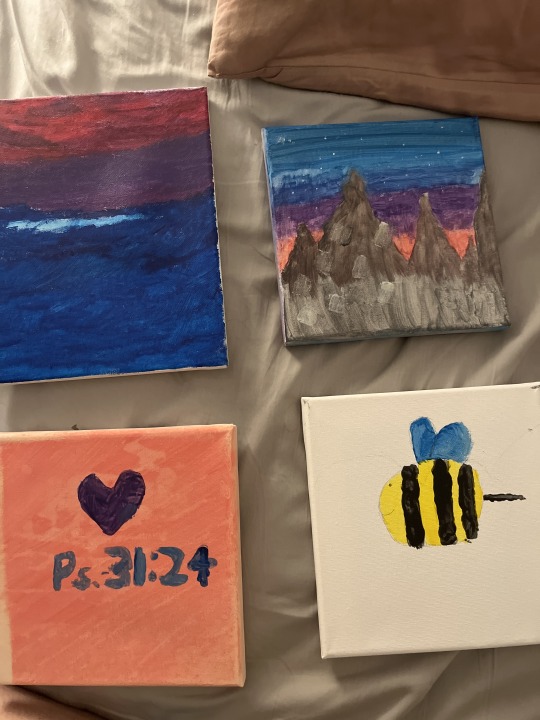
[Image ID in ALT Text]
We’ve had a few art nights at youth group, and here are my four latest pieces. I think it’s a possibility that one could interpret something from the colour scheme. I don’t know, though, I’m not sure. What do you think?
#the first one is from early 2022 when i was questioning my sexuality#kinda like. thinking ‘yeah i’m bi’ but not fully?? idk it was complicated#no one said anything by the way#it’s Abstract#(i painted blue. i painted pink. they came together. i went Oh. Could This Mean Something. it did.)#in fairness: i did orientate it horizontally instead of vertically but like#if i tried that shit as a leader with the current youth they would clock me so hard#but FUCKING-#THE OUT OF PROPORTION BI FLAG TEAM#THE BI COLOURING#the first three are bi in colour scheme the fourth is bi (bee) in principle#bi bi bi bee - bi-thoven’s 5th
7 notes
·
View notes
Text
Y’all know that like…the conservatives in Texas didn’t just suddenly start ‘attacking’ queer people because of terminally online ‘kink at pride’ discourse, right?
Like, y’all are aware of the fact that this reactionary conservatism was already on the rise for the past 10 years or so, right? And that whatever squabbling on the internet that this community has been doing with one another literally is not the reason or basis as to why emboldened conservatives feel comfortable toying with our basic human rights…right?
This is literally why I have been such a proponent for active and inclusive spaces for queer people of ALL ages… which absolutely includes minors. Which is something that (depending on your region) has been a common thing in many queer spaces and even during pride where you will find various events such as inter-generational lunches and youth camps.
Now, we are seeing these super conservatives use one of the most vulnerable and easily impressionable groups of people in society to project their horrific ideologies onto in the name of their ‘safety’ while y’all…are too busy complaining about how kids don’t ‘deserve’ to be at pride. Do y’all not see how this was a missed opportunity to create better community opportunities for kids and teens, especially if they’re queer/trans? Do y’all not realize how important the youth in any community, but especially in minority communities, and their education and (physical/mental) safety are to making sure the future of that community can continue?
This is the nuance that has been consistently missing in these conversations about pride and community, overall, and it’s genuinely baffling to me how y’all only give a shit about your personal adult endeavors being affected by this wave of conservatism. As if everything else, especially the autonomy of minors, is some kind of pit stop in the grand scheme of activism when it’s literally the bedrock of so many current social issues that we are seeing and experiencing today.
Everything is connected. Everything. So, if your ‘queer activism’ doesn’t even include the health, safety, and education of minors…then it’s genuinely worthless. I don’t care if you want kids or not because that’s not what the point of this post is about!
Your personal hang ups with your parents regarding children has nothing to do with the bigger picture of needing to create a better society for the future generations of human beings who did not ask to be here, like the rest of us. Y’all have spent far too long seeing the forest for the trees and that’s what’s been putting so many ‘leftists’ on ice when it comes to actually organizing and making real structural change.
Some of y’all may not like hearing this but we do have a responsibility to be just as supportive and compassionate towards children and teens as we are towards anyone else in this world. Think about your own foundations as kids and teens. Wouldn’t it have made your life easier knowing there are communities of adults and peers you could trust? Wouldn’t it have saved you some anxiety to just know that you could have more than one or two people to reach out to when you were in pain?
NOTE: yes this can be reblogged, but if you respond with some annoying ass ‘uwu but I don’t like kids’, you’re getting blocked.
Also: THIS POST IS NOT FOR ‘PRO PARAPHILIA’ CREEPS! STAY OFF MY POSTS!
#ok to reblog#pride#queer#gay#lesbian#bi#pan#ace#aro#trans#nonbinary#queer youth#children’s rights#activism#leftism#intersectional feminism#feminism#trans youth#discourse#pbscore#if you respond to this post with some bullshit about hating kids…i’m breaking your knees#no one gives a shit if you want kids or not in the conversation regarding queer youth’s safety
242 notes
·
View notes